Blog 20
29th June – 4th July
Rushan to Murghab
Distance: 529km
Total Distance: 6541km
Following the Amu Darya from the Aral Sea to it’s source(s) is a complicated journey. So far I have followed the Amu Darya, its key tributary, the Zerafshan River, then back to the Amu Darya to where it turned into the Panj River (at the confluence of the Vakhsh River). But from Rushan I am starting to explore the key tributaries that lead to its sources – one being the Amu Darya’s true source.
Day 98 Rushan to Basid 84km
Rushan is where the Bartang River flows into the Panj. The Bartang River becomes the Murghab and then the Aksu rivers. The Aksu flows out of Chaqmaqtin Lake in the Wakhan Corridor, Afghanistan – one of the recognised sources of the Amu Darya.
Five kilometres out of Rushan I turned onto the Bartang Valley Road. We had heard that the river is extremely high at the moment due to the extreme heat wave melting the glaciers faster than usual, so there was a chance the track would be blocked in the narrow valley. Getting a vehicle through where the track could be washed away or flooded is particularly dangerous and so Alisho, who has been coordinating my journey through Tajikistan, took a taxi from Dushanbe to join the team and help out.
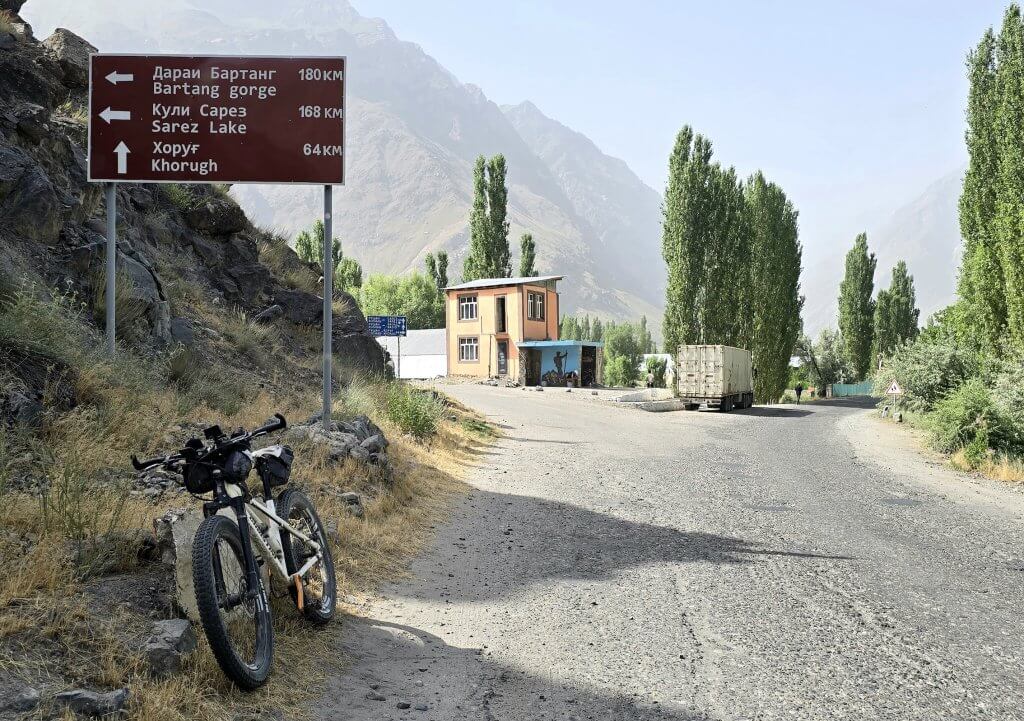
Over the first 20km, there were small patches of Soviet-made asphalt that quickly crumbled away into loose gravel, big stones and wash aways. The road closely conformed to the river, which was indeed flowing fast and the waters lapping at the edge on the road at times.
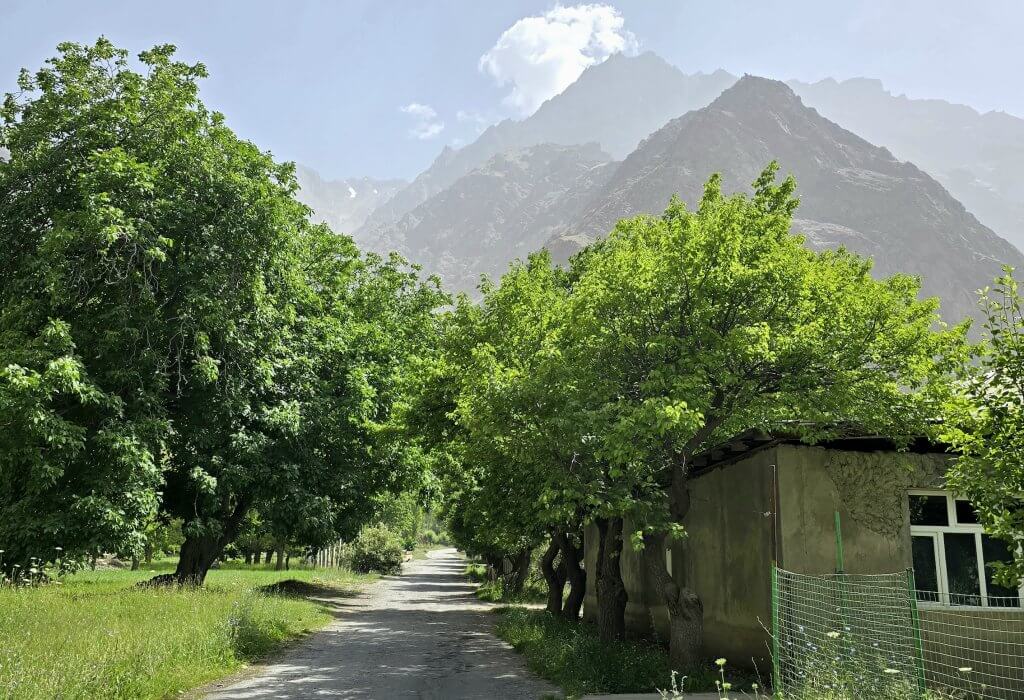
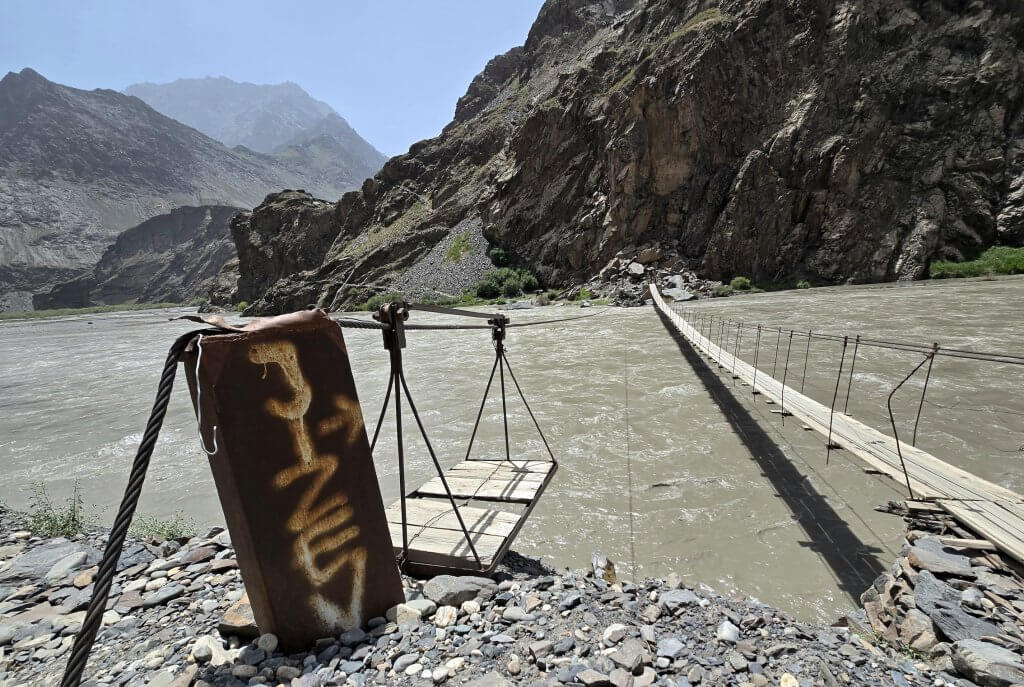
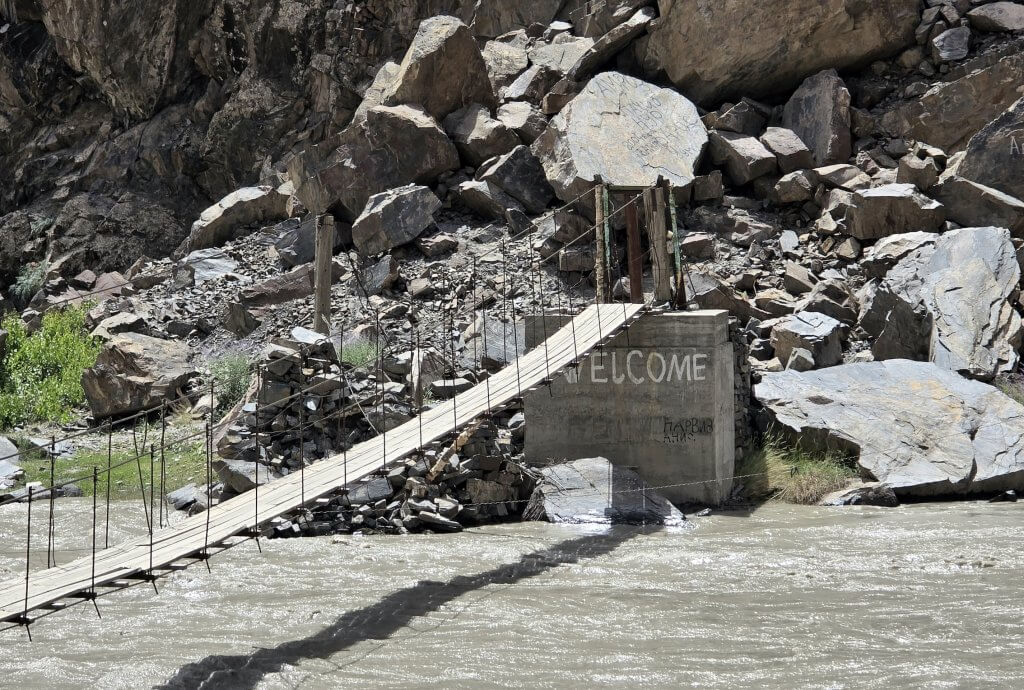
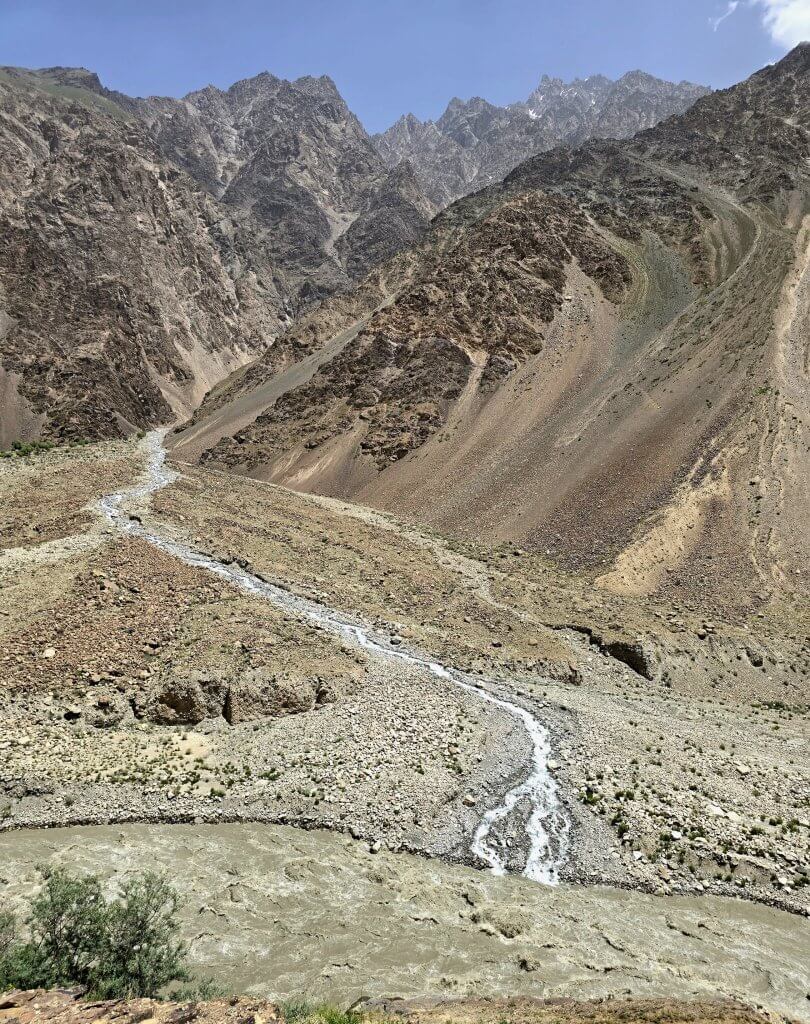
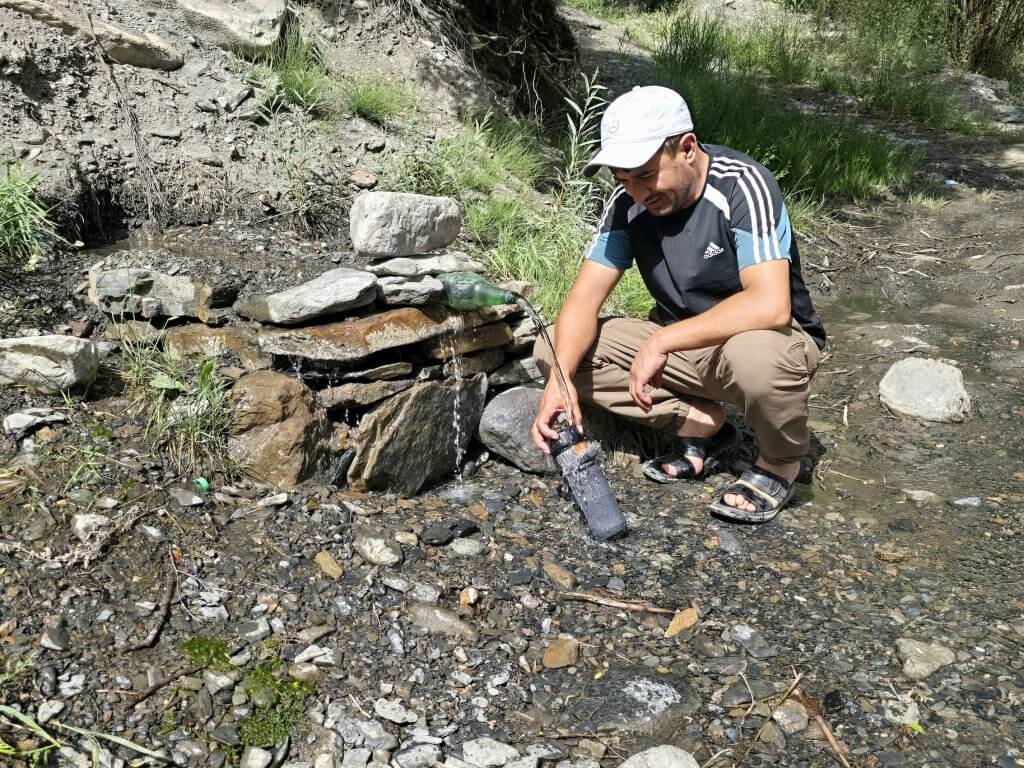

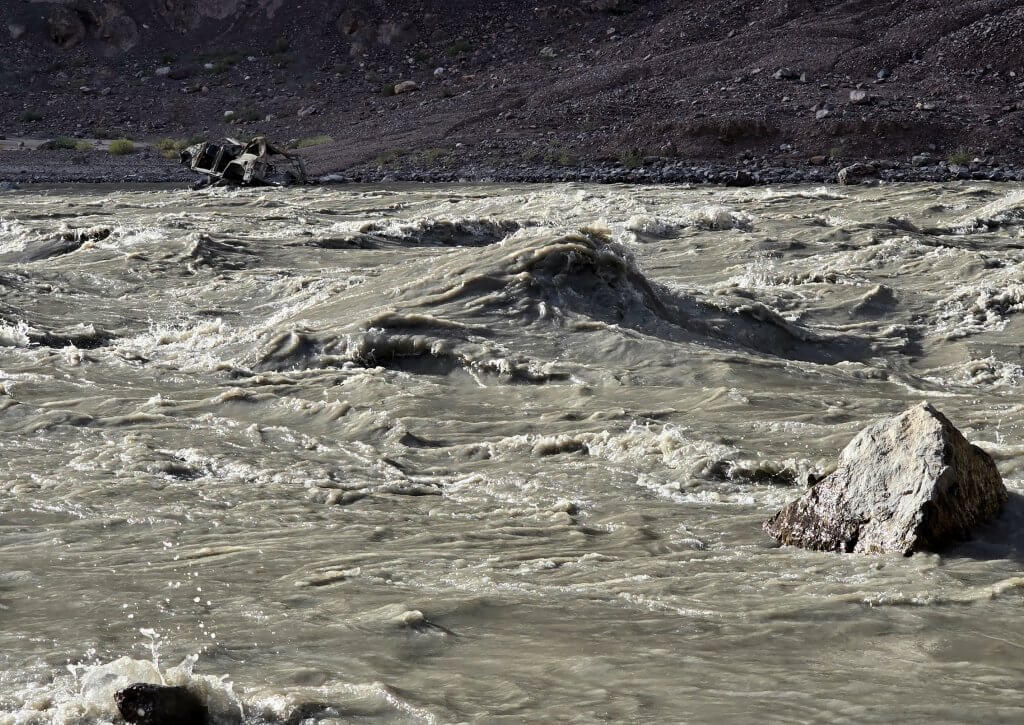
Day 99 Basid to the end of ride track up the Bartang – 68km
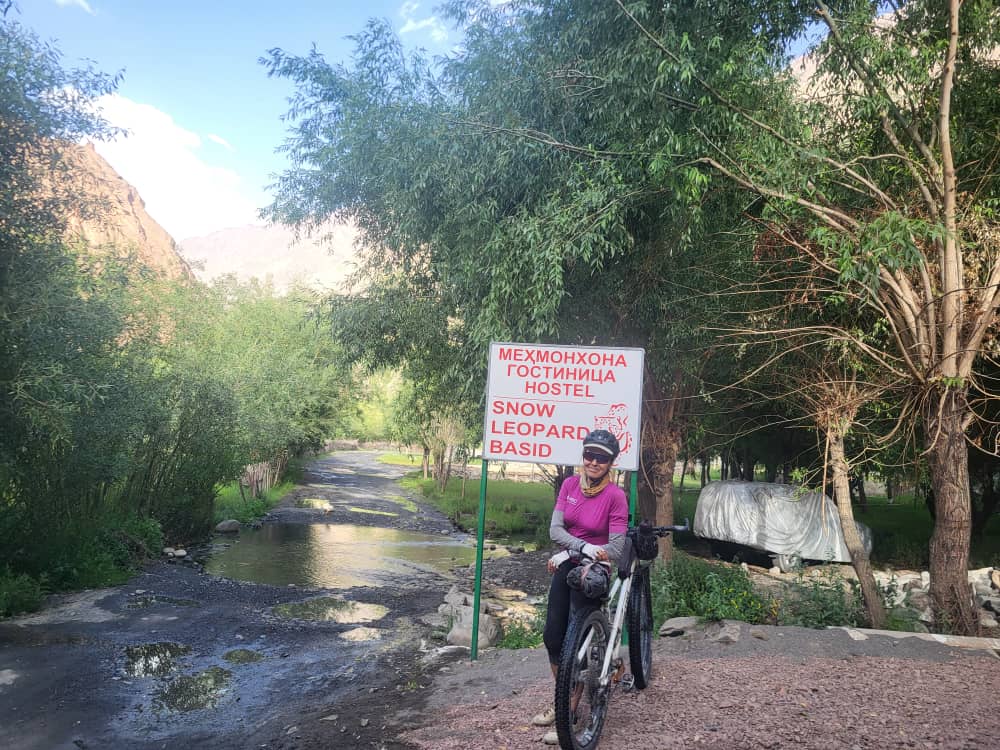
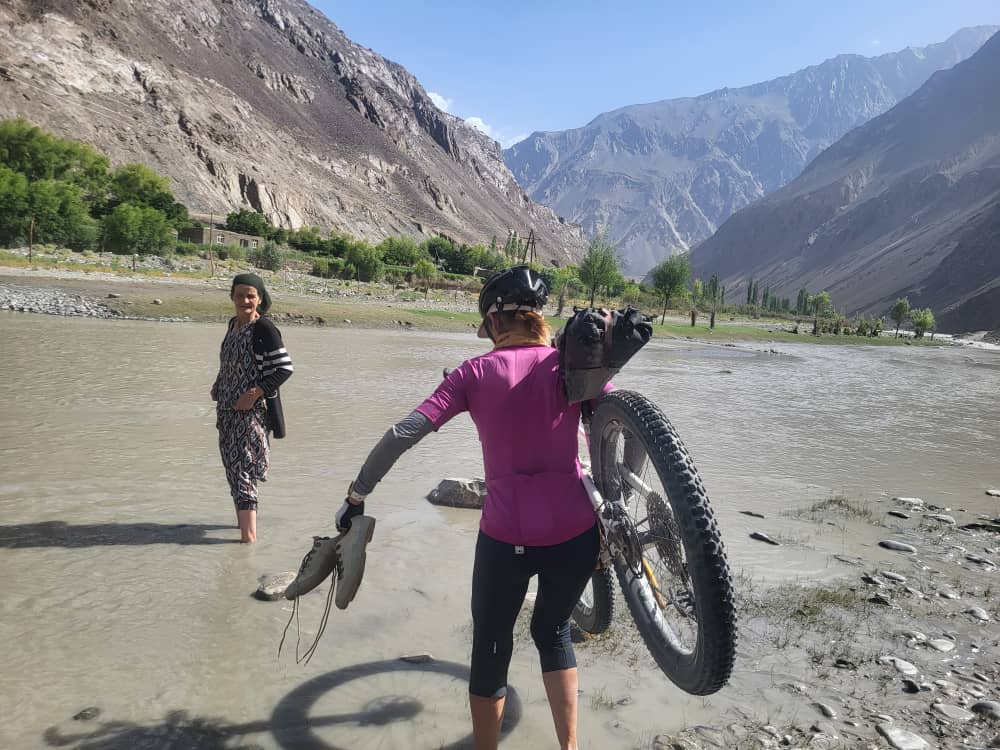
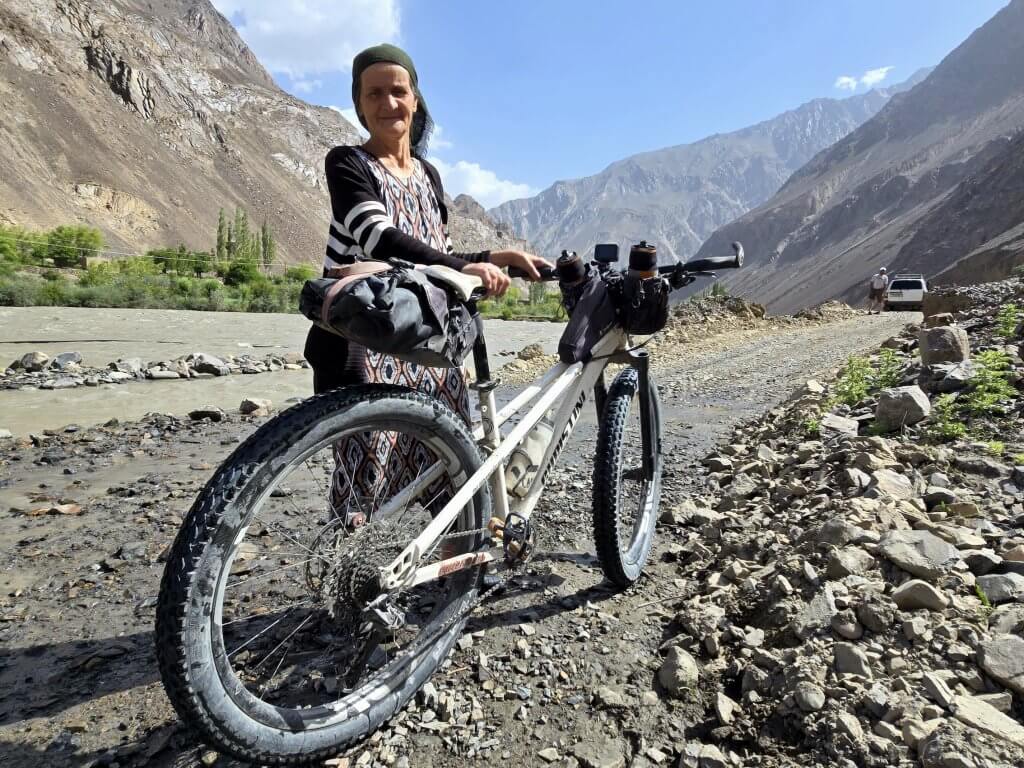
Day 2 seemed to be harder going – and Day 1 was already exhausting! I was feeling particularly low on energy because I was again struggling with diarrhoea. There were so many steep climbs of 10%-15% gradient on loose gravel. These really sapped my energy. Progress was slower because water crossings take time and we took an early lunch after just 35km covered.
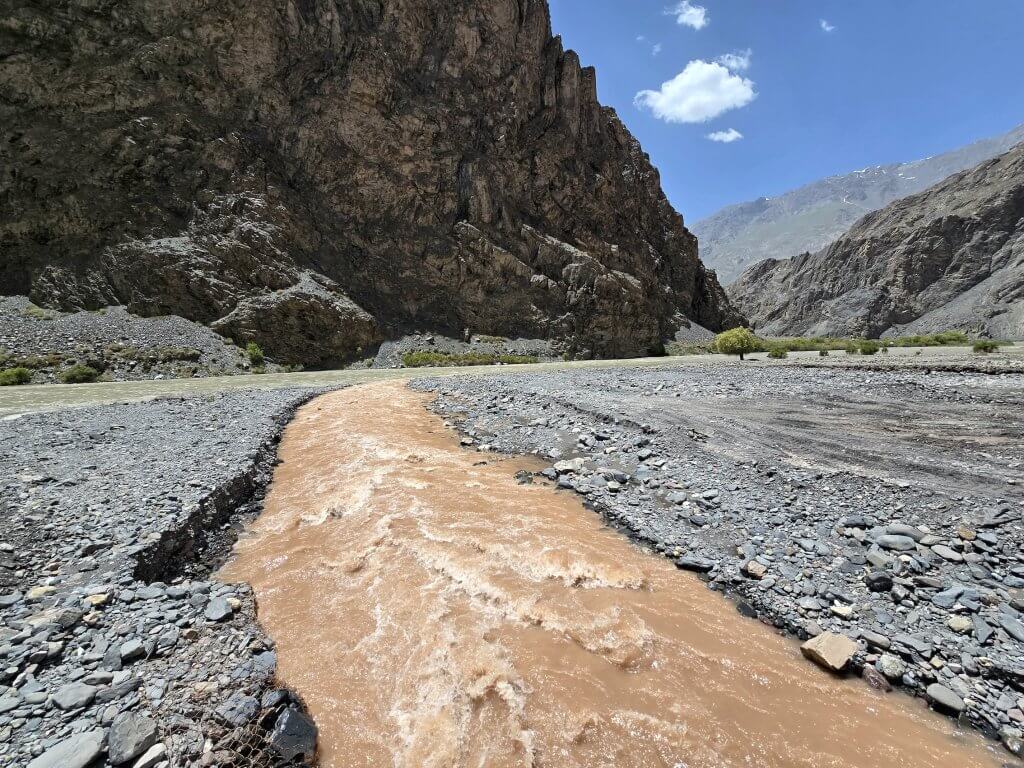
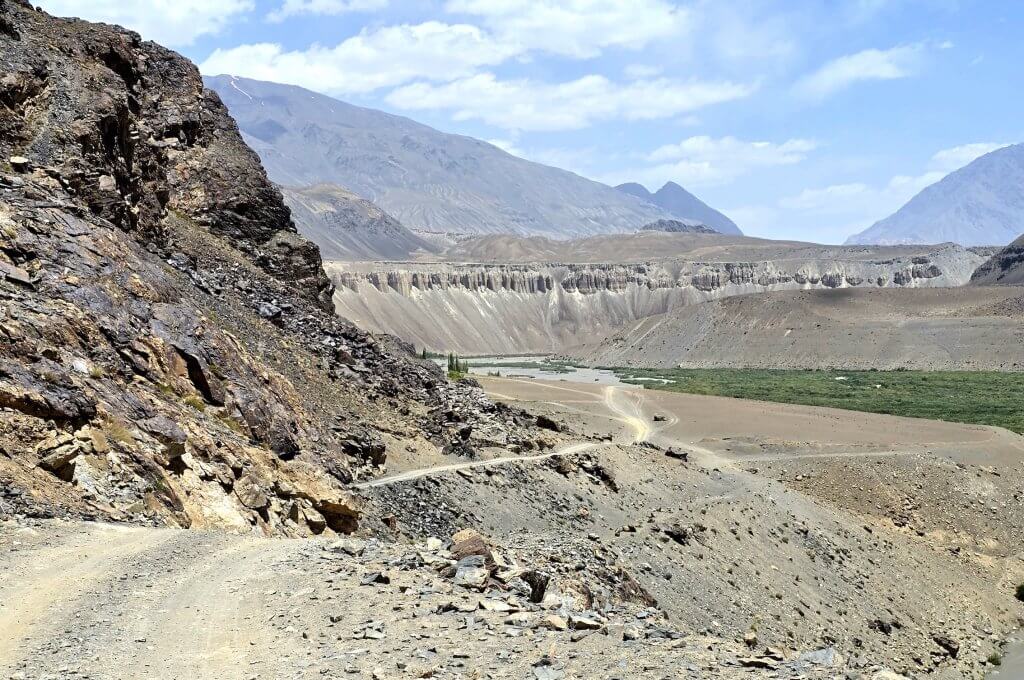
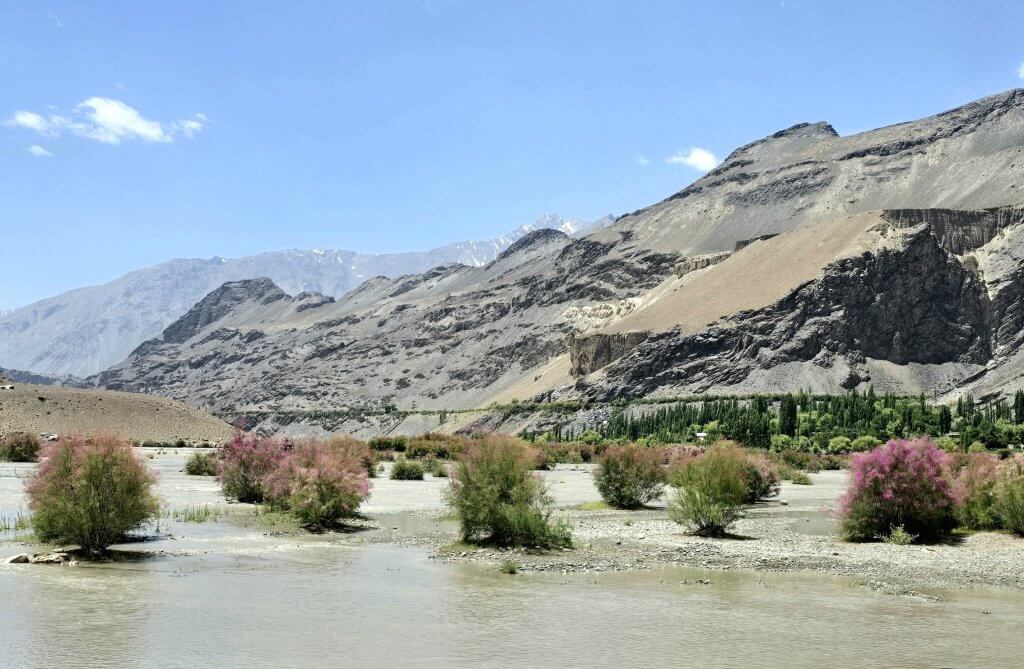
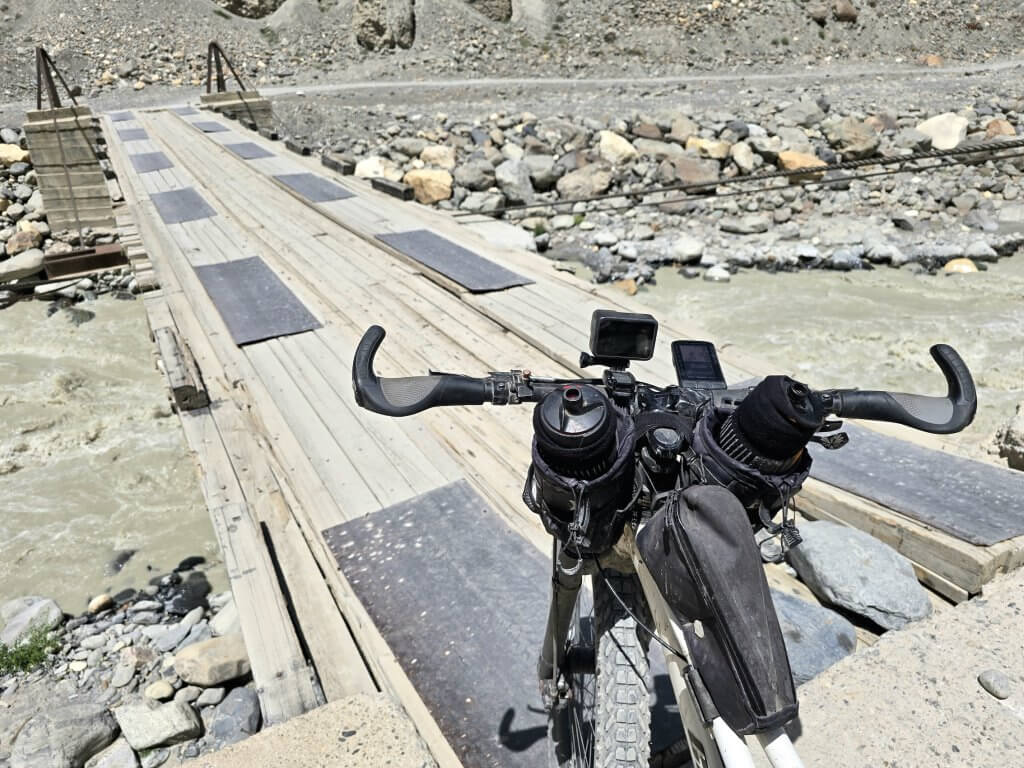
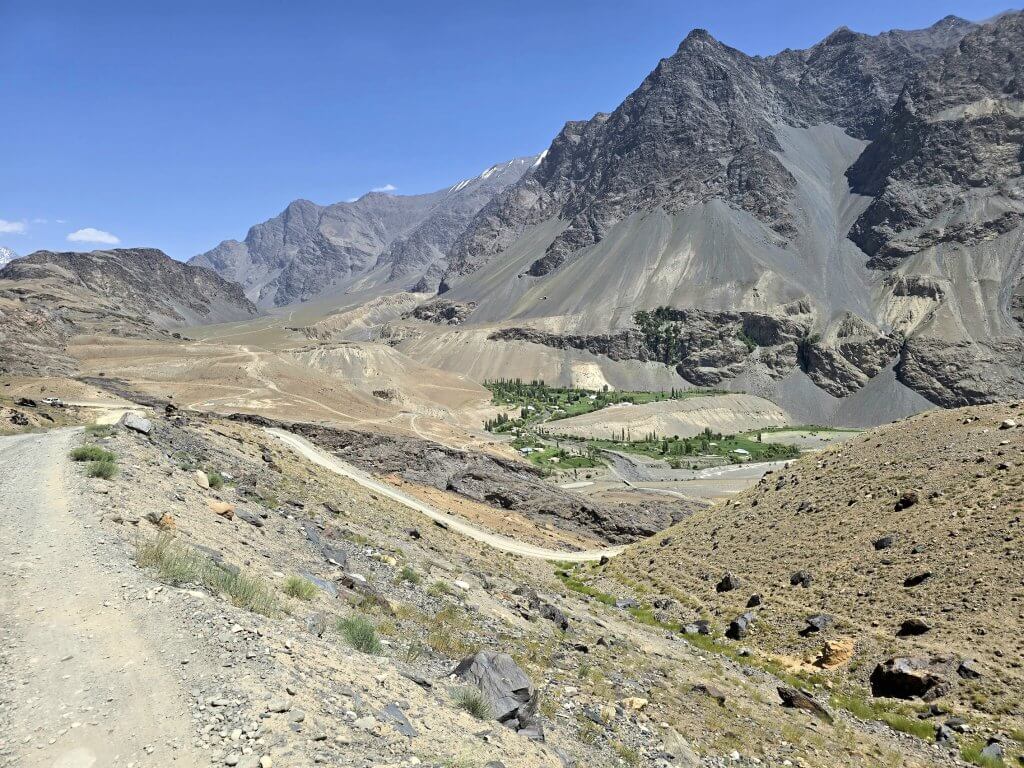
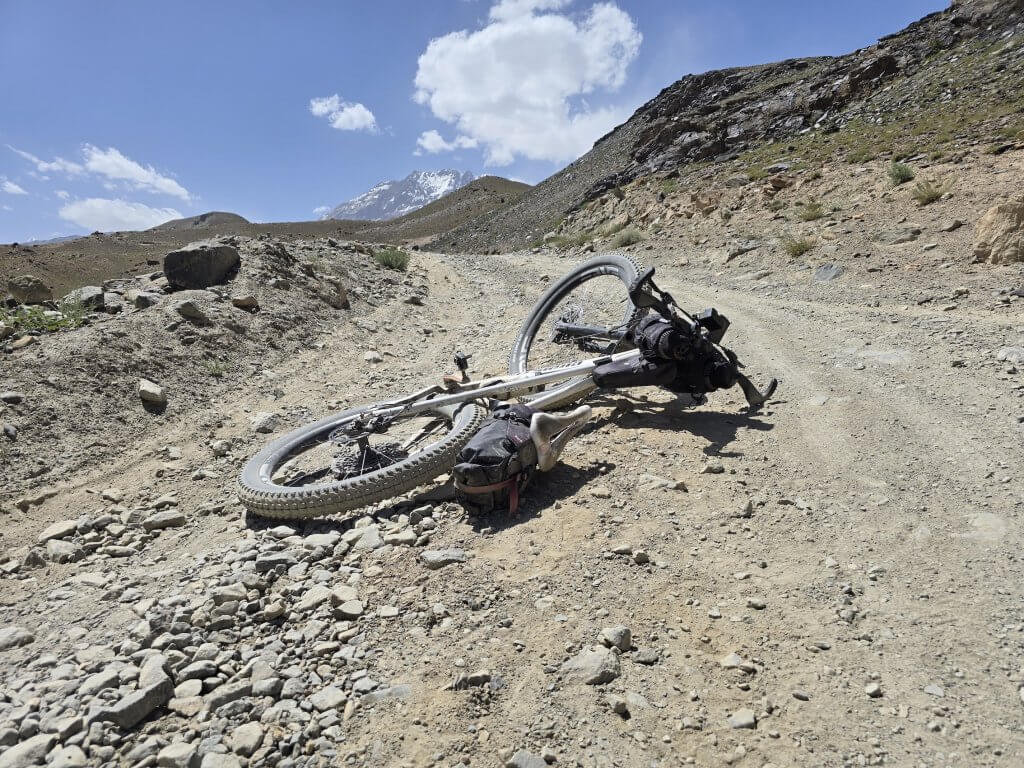
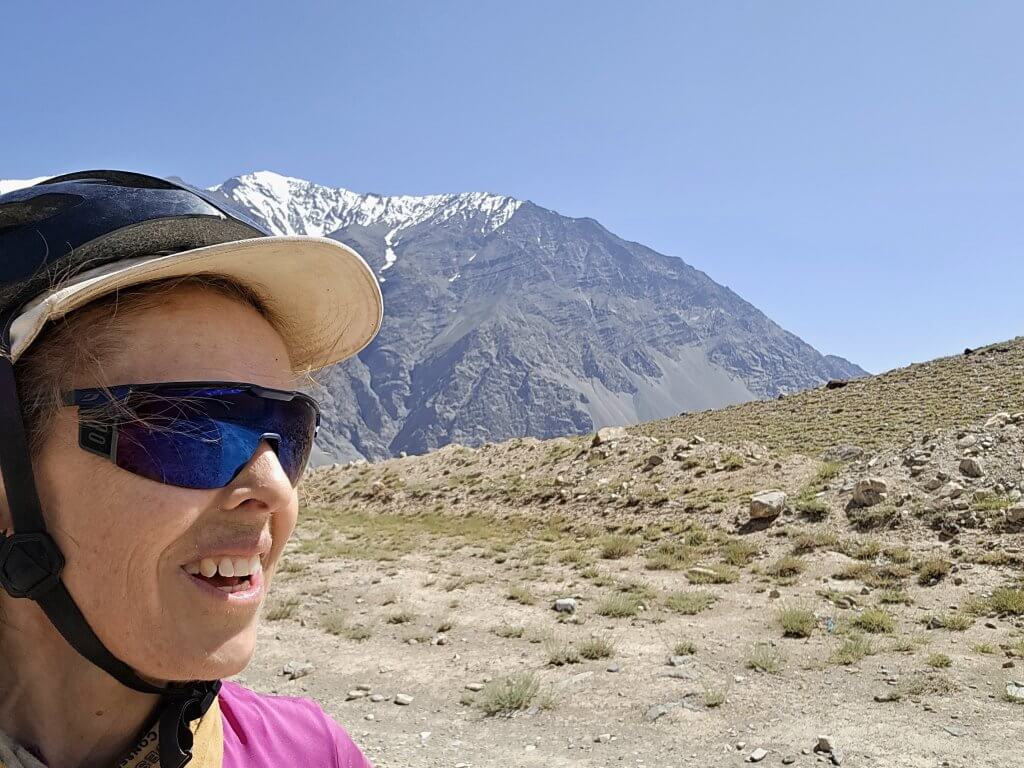
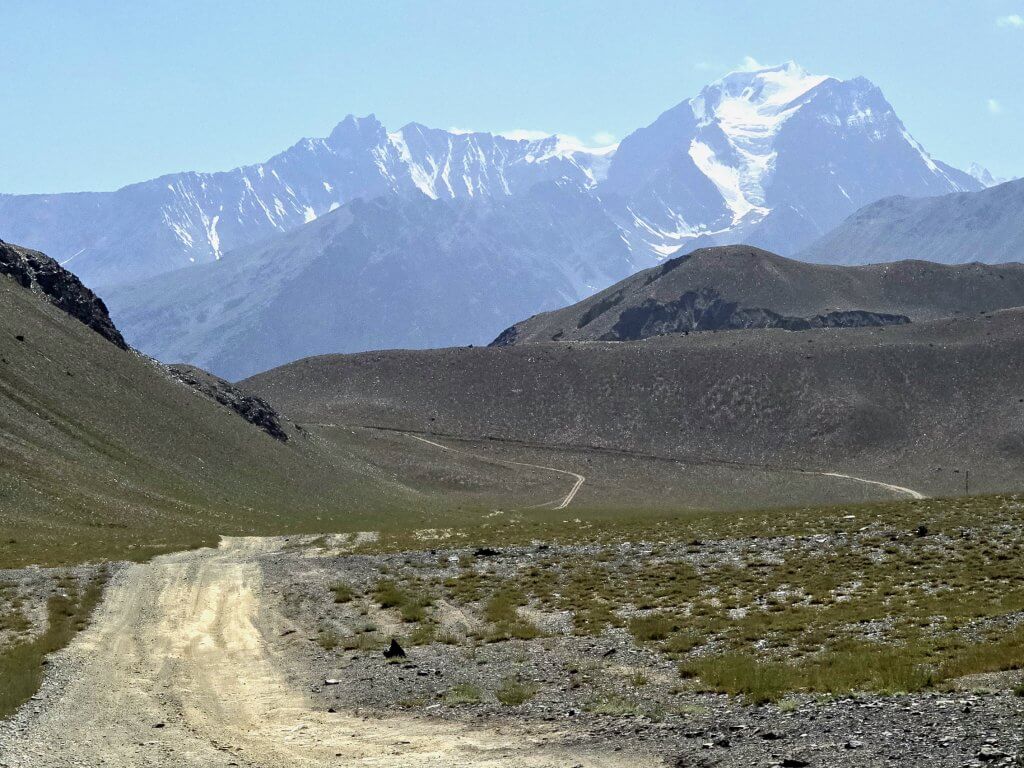
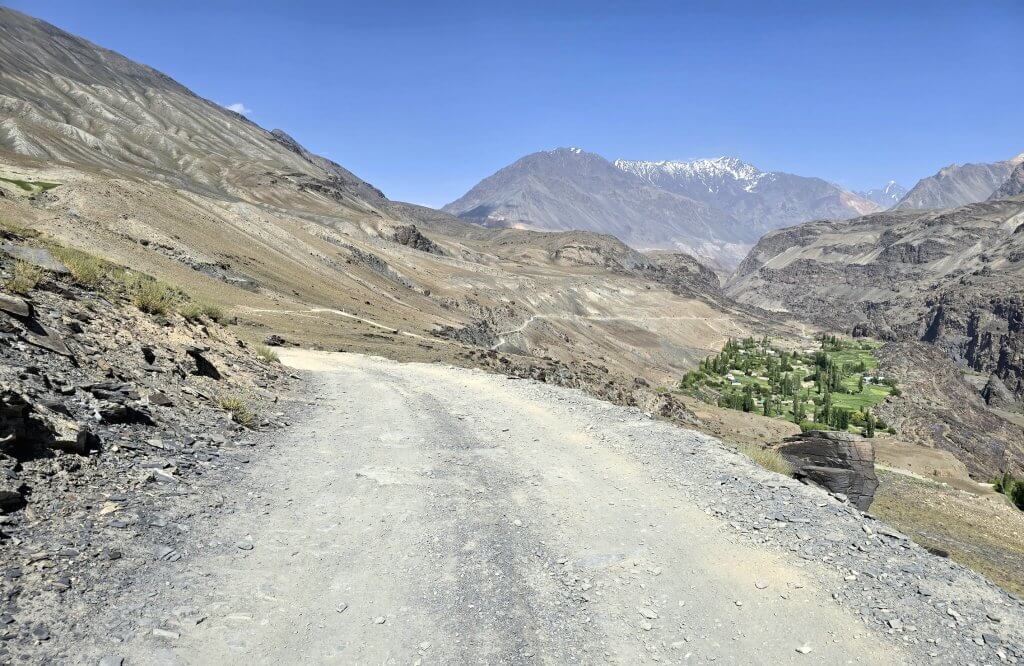
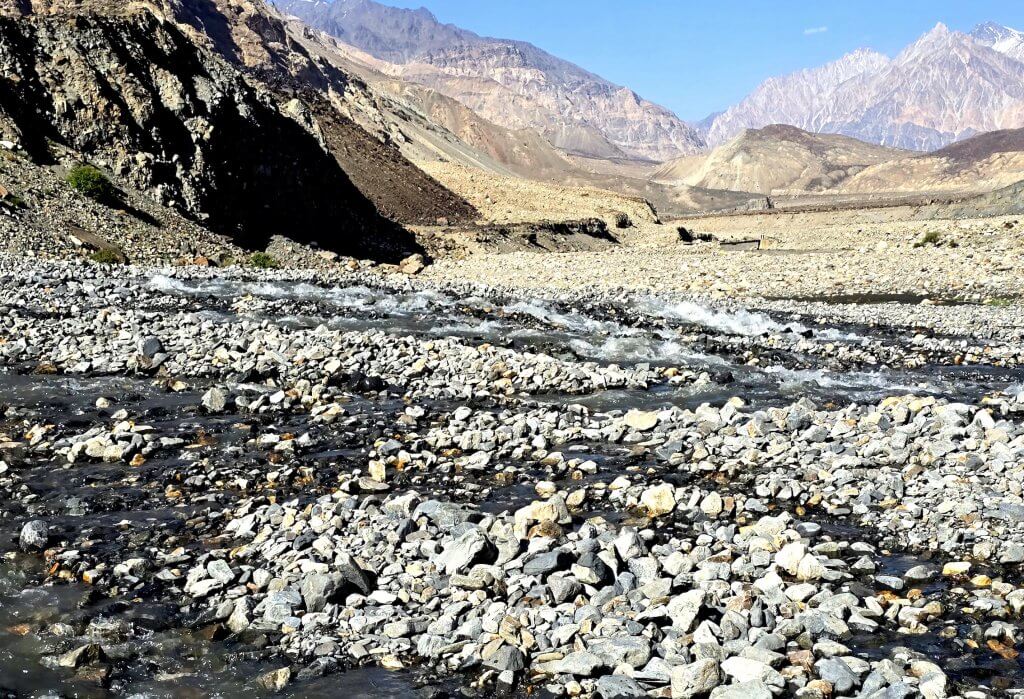
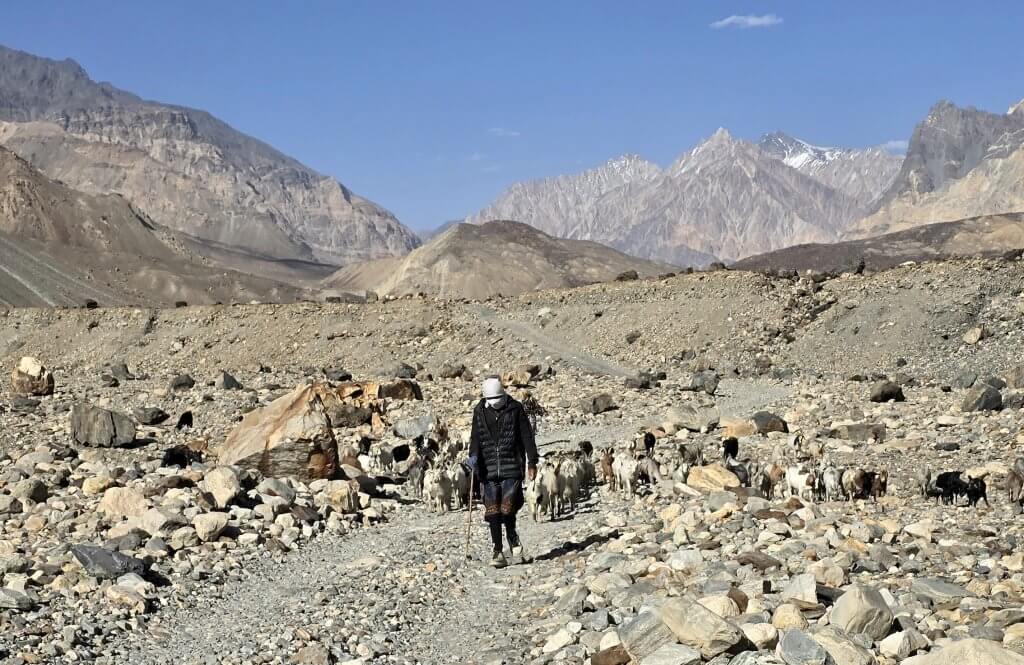
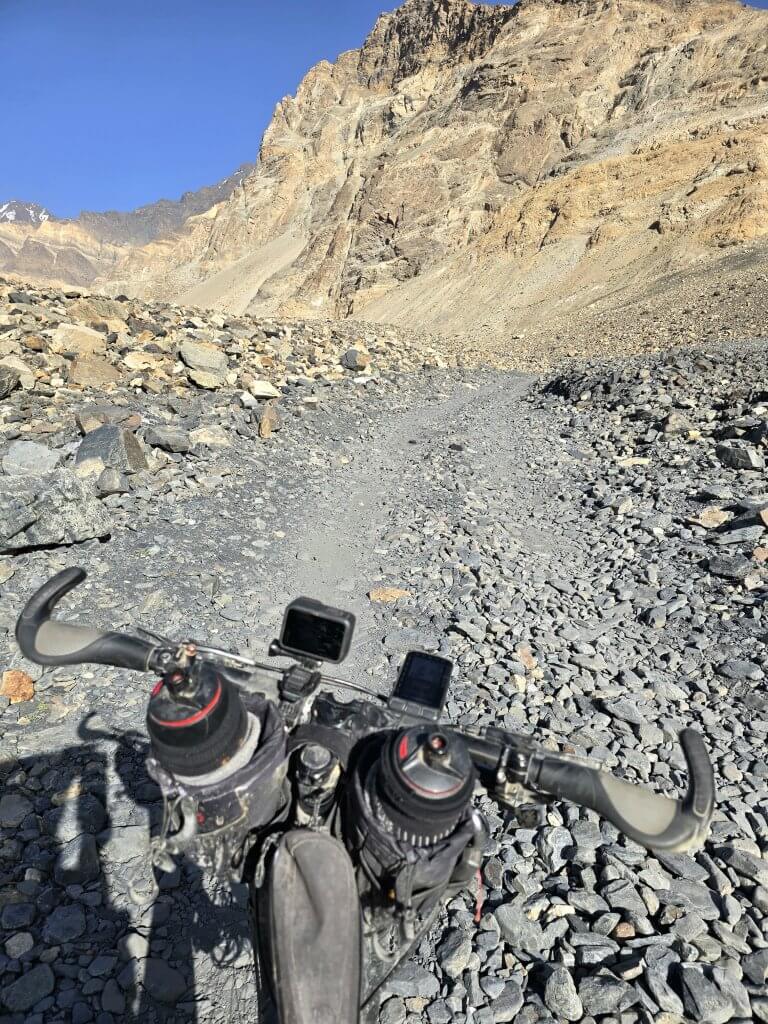
Knowing this was a likely scenario, I had already made a Plan B that both fit with my schedule and honoured my plan to follow the key tributaries that feed the Amu Darya.
It was never possible to follow the Bartang River all the way to where it becomes the Murghab River anyway. In 1911, a huge earthquake created a natural dam and formed Sarez Lake. This is a huge body of water, about 100km long. At the end of the lake the Bartang River becomes the Murghab River that winds its way out of the high mountains to Murghab town. I had cycled past where the Bartang is dammed (a 30km hike from off the route) so I had already followed the Bartang River as far as possible. The remainder of the route was going to follow a tributary of the Bartang.
Plan B included two days up the Bartang, then return to the Bartang Valley turnoff near Rushan, cycle to Khorog, the main town in the region, and then cycle up the Pamir Highway to the town of Murghab to link up with my original plan from there. This is where I was going to pick up the Murghab River anyway. The distance is only a little further.
Day 100 Bartang Valley turn-off to Khorog – 59km
From the point where I stopped cycling, we decided to drive half way back to Basid – a three hour drive, and then a further three hour drive the next morning to get back to the Bartang Valley turn-off. In that time we noted the river was still rising, so I knew we had made the right decision.
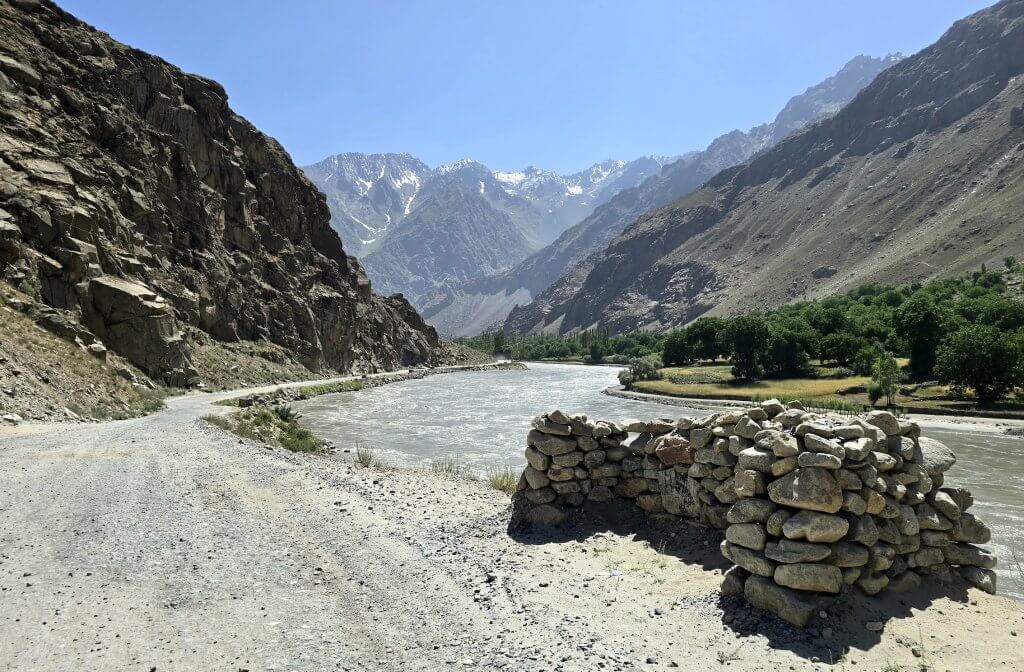
Khorog is a vibrant town a the major centre in the region with more restaurants and shops. We ate at an Uzbek restaurant with a live band playing.
Day 101 Khorog to Jelondy (Hot Springs) – 129km
It is the only continuous route through the difficult terrain of the mountains and is the main supply route to Tajikistan’s Gorno-Badakhshan Autonomous Region. There are a limited number of viable routes through the high Pamir Mountains and the route has been used for millennia. The road formed one link of the ancient Silk Road trade route. It was constructed partly in the end of 19th century (during The Great Game), and mostly in 1930s by the Soviet Union. In 2000s the Pamir Highway was connected with China and Karakoram Highway. The Pamir Highway, (M-41) is known as the international highway with the second highest altitude in the world.
From Khorog I turned away from the Panj River and onto the Pamir Highway towards Murghab. I was feeling a bit pensive because there was a lot of altitude to gain over the next day and a half, from 2086m in Khorog to over 4200m. The only way out of the Panj River valley was up, steeply for the first few kilometres.
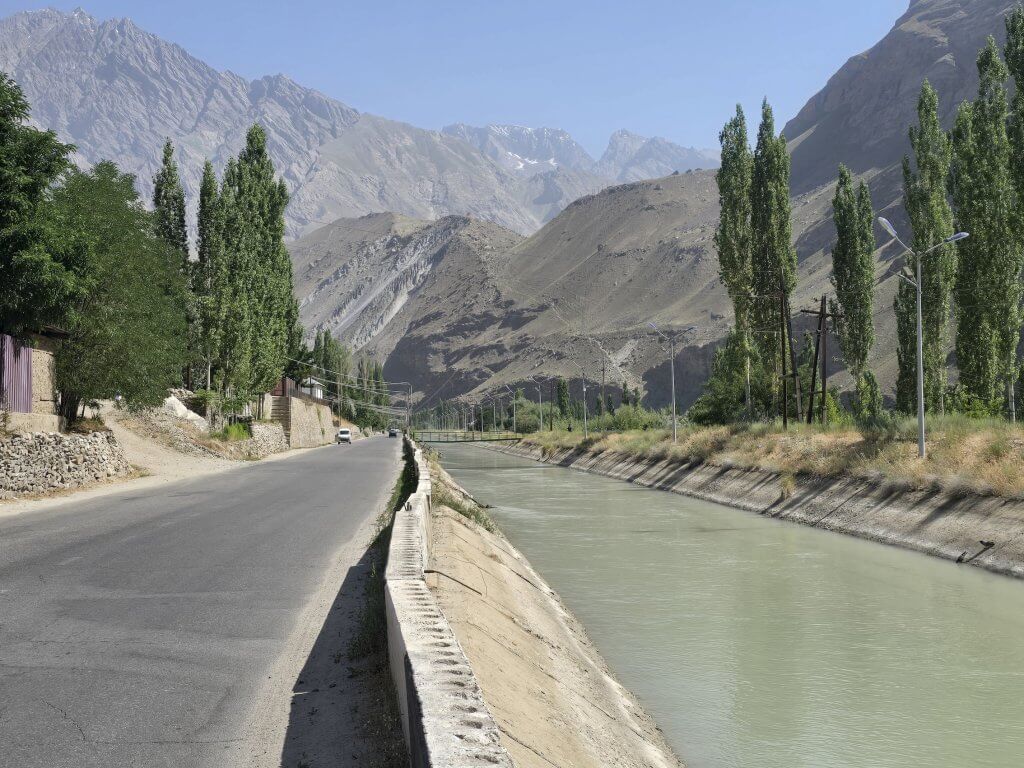
After traversing a series of “open tunnels” I descended sharply to the Gunt River valley and one of several checkpoints along the highway. After that the highway followed the course of the river, gently ascending with some steeper sections. There were a lot of gradients of 2-4% and then some sharper climbs of 6-8%.
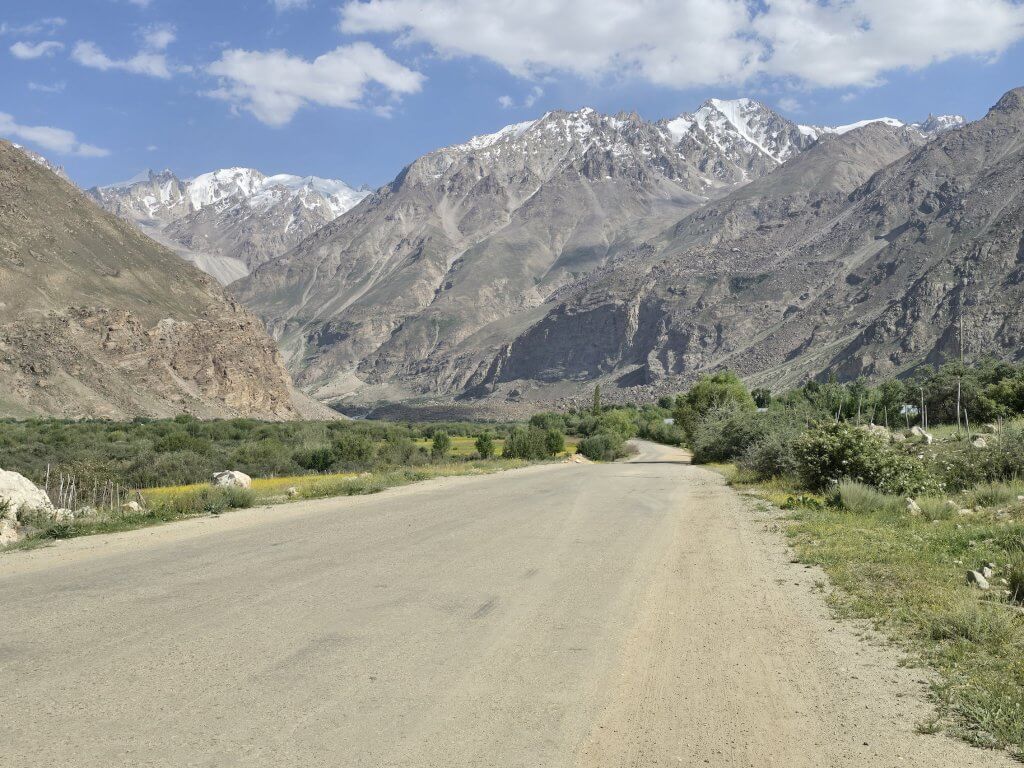
I just tried to keep the pedals turning, averaging 13.2km/hr for the first half of the day, but increased it in the second half of the day. I had planned to stop at a village after 104km, but there was nowhere to stay and Karim said there would be a place at 122km.
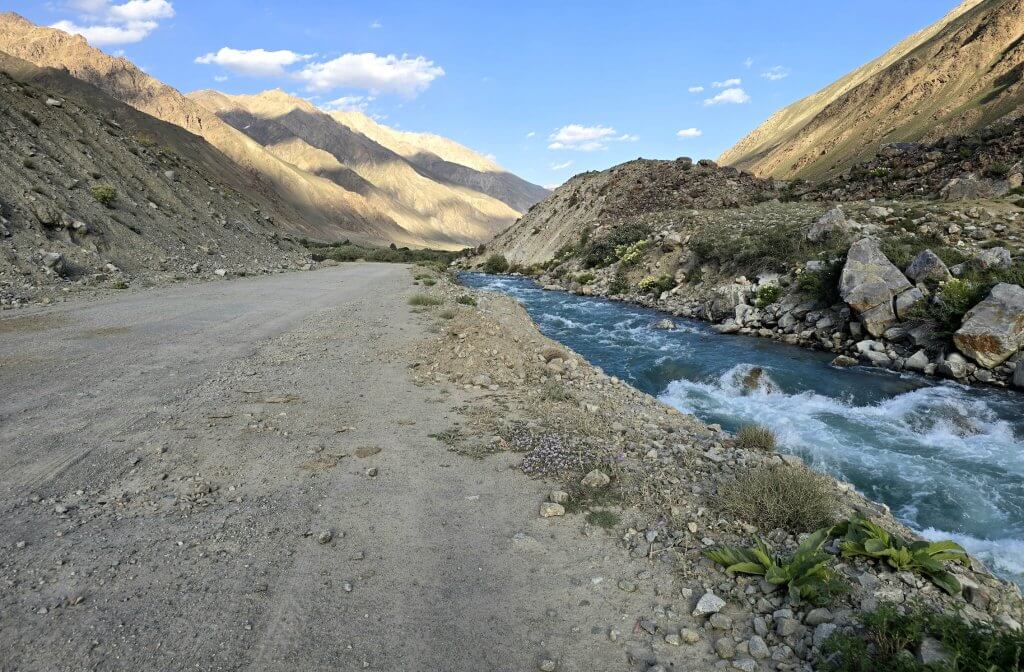
The day turned into an epic. At 122km there was a truck stop but no place to stay – not Karim’s fault, Google and MapsMe app were incorrectly marked. We eventually came to Jelondy village and a strange place built around some hot springs. I was exhausted but very pleased to have reached this far, to take the pressure off the following day – the big pass was looming. Incidentally I cycled for 9 hours, gained 1889 vertical metres over 129km!
Day 102 Jelondy to Alichur – 85km
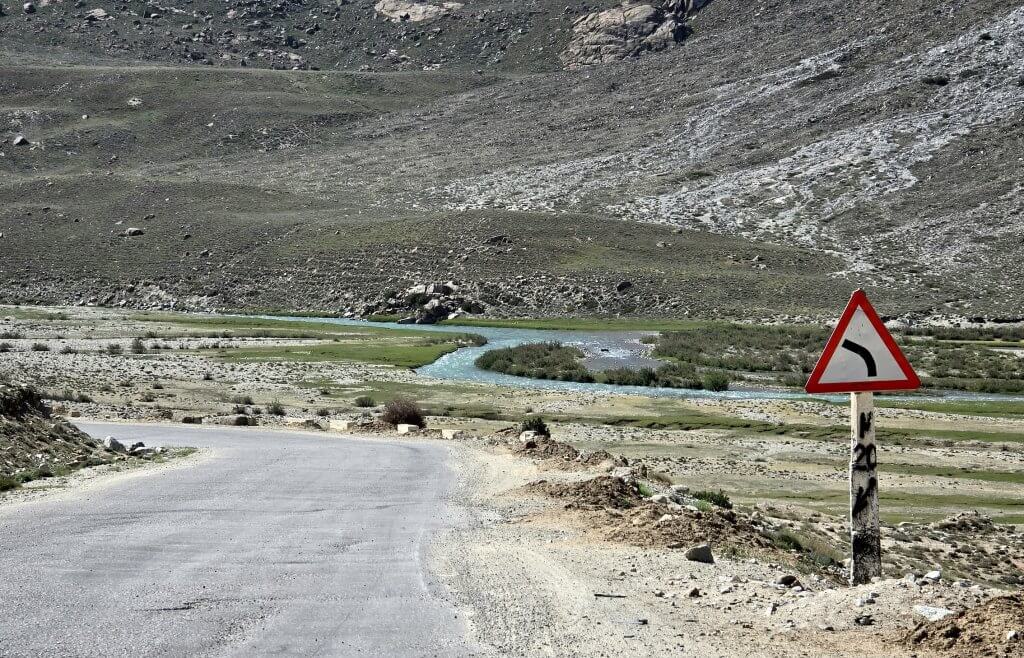
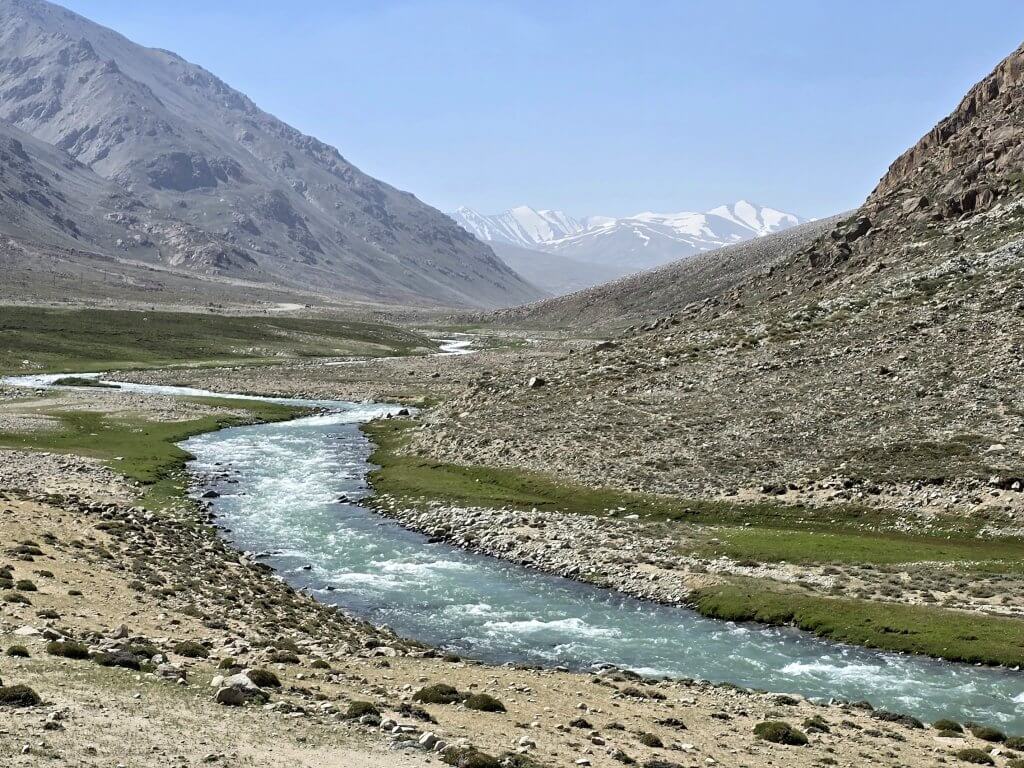
Throughout this journey Georgia and Anna have been filming rides for the virtual cycling app and sponsor, ROUVY. I sent Georgia and Karim off up the pass to capture what should be an epic virtual ride for thousands of cyclists to experience (virtually, of course, without experiencing the challenging road surfaces or altitude!) I tried to move steadily, not pushing too hard up the valley.

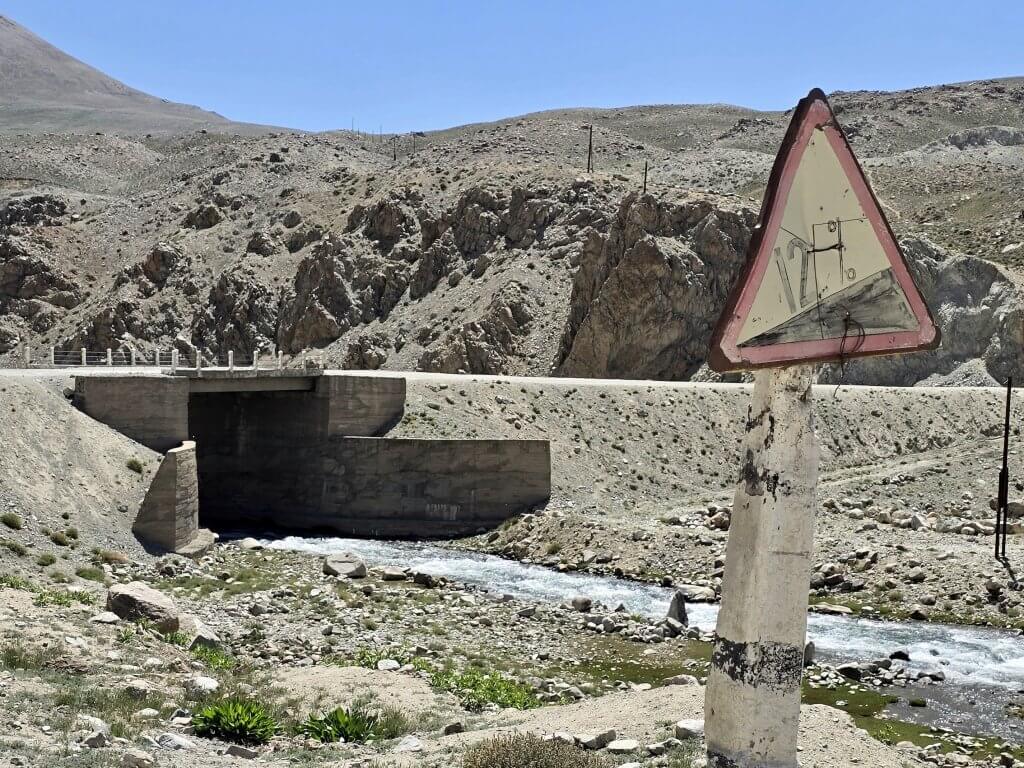
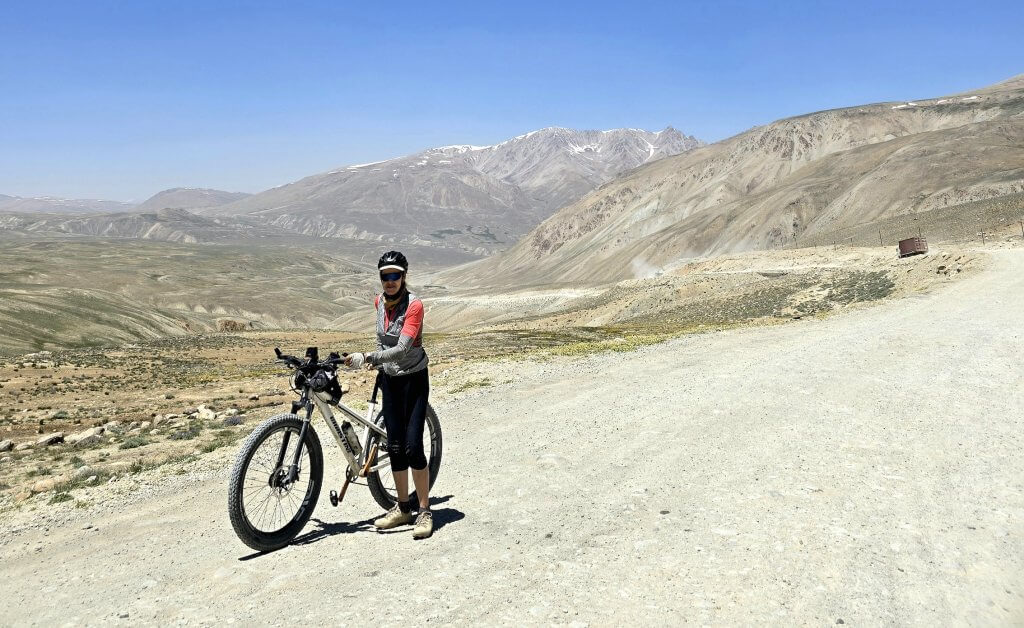
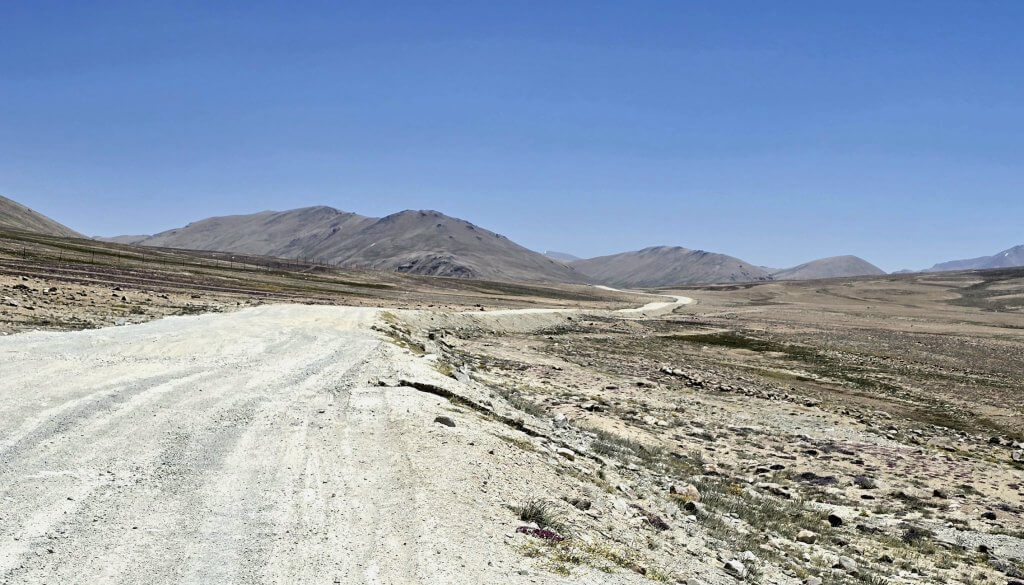
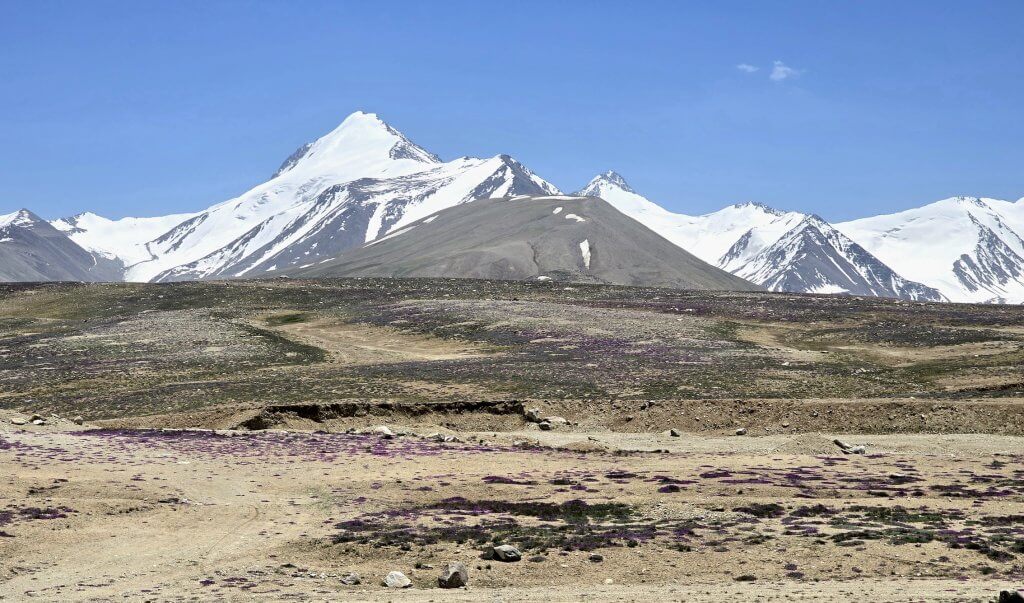
Here are a few images of the rest of the day
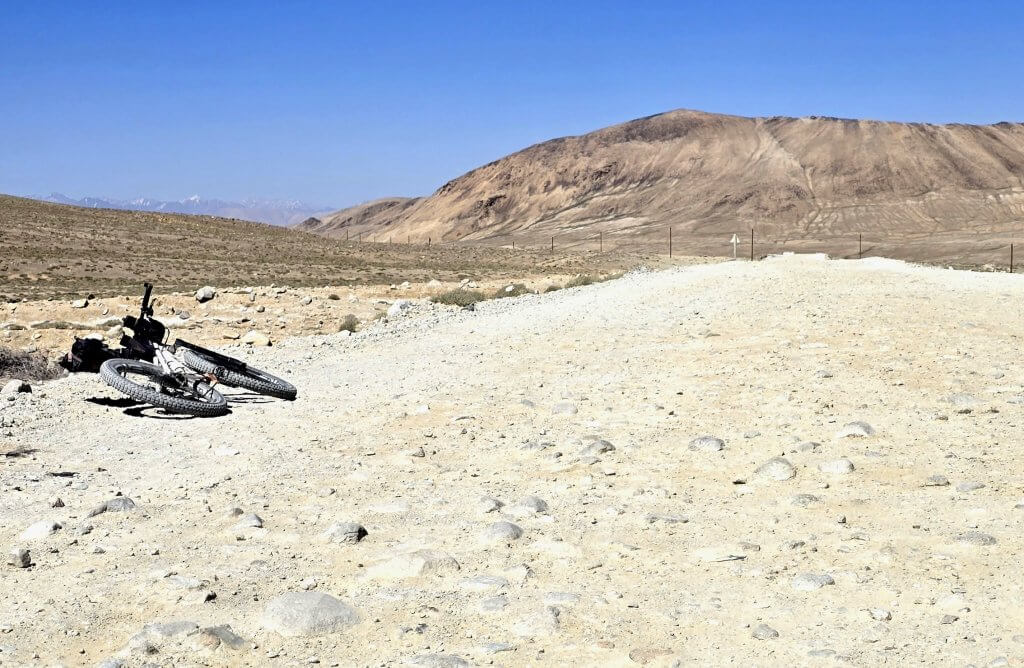
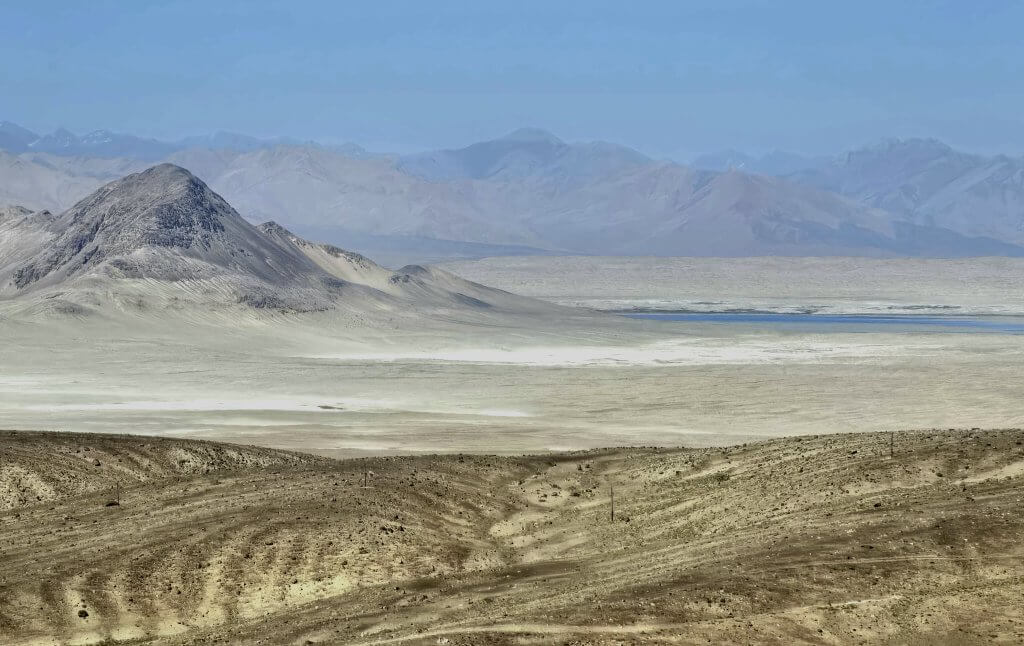
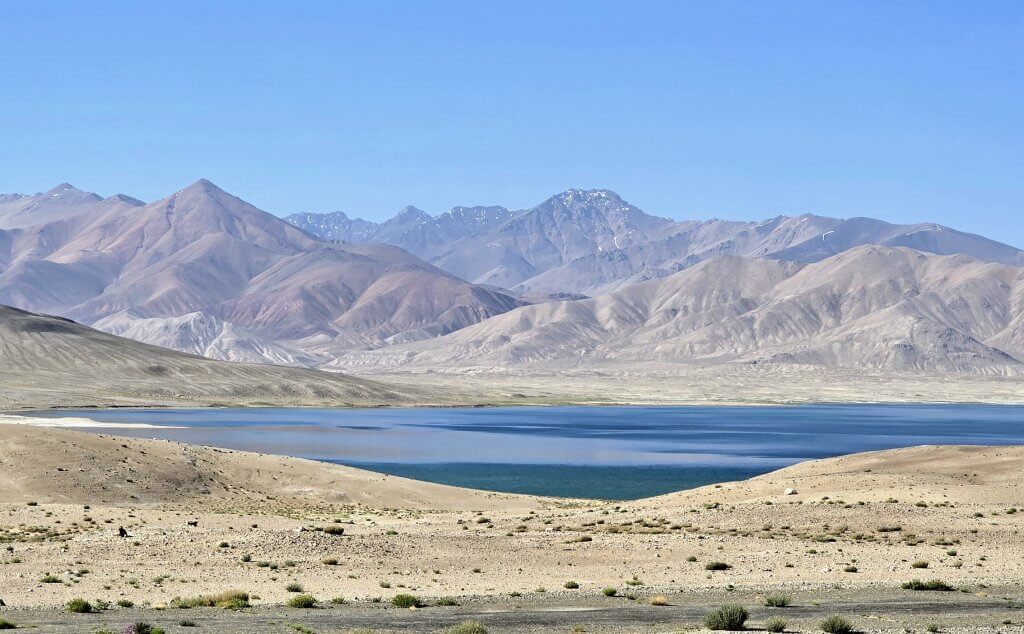
Day 103 Alichur to Murghab 104km
I was now seriously exhausted…my Suunto watch app tells me every day I need 120 hours rest – impossible! The ride tracked the wide valley with beautiful multi-coloured mountains alleviated some of the aches and pains.I gradually ascended from 3800m back up to 4147m. I was really crawling along, until the road started the descend. Murghab is at around 3600m.
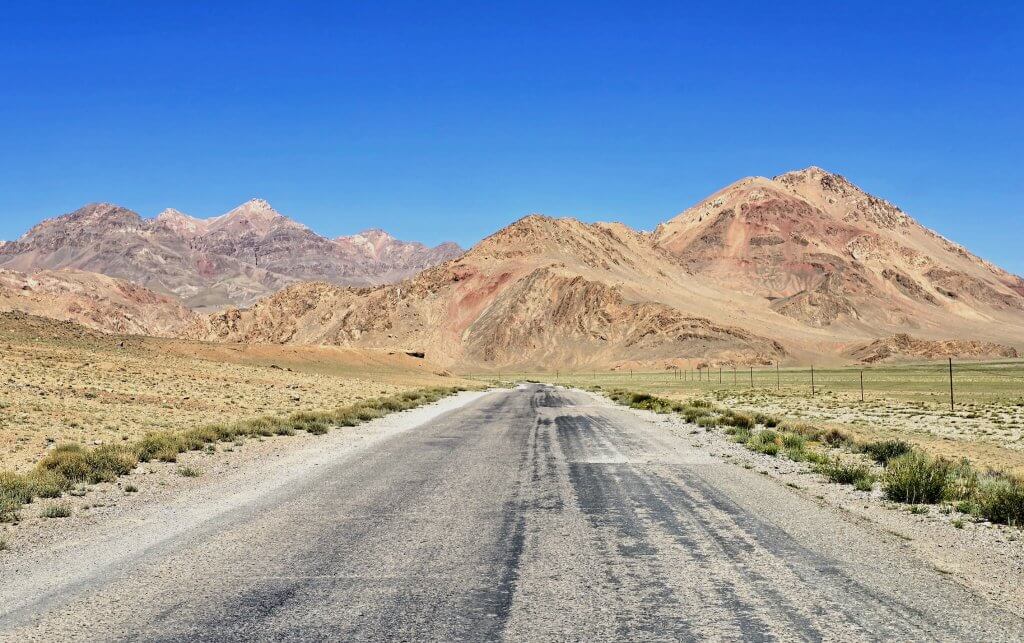
After 72km, we turned off on a side trip to see the Shakhti Cave Drawings, a world heritage listed prehistoric artwork set high above the stunning vast valley.
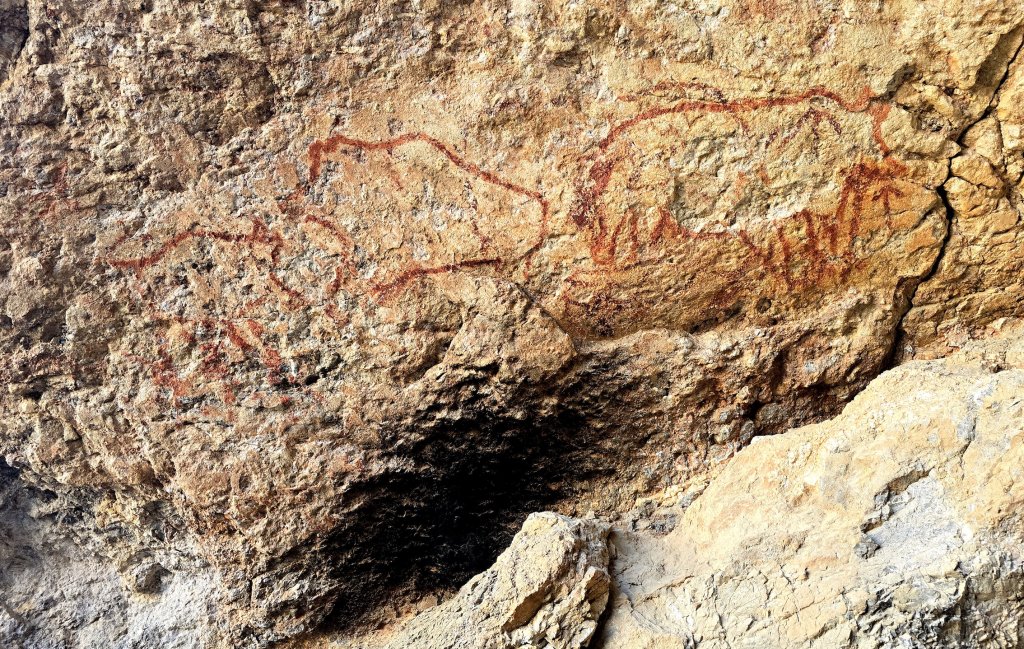
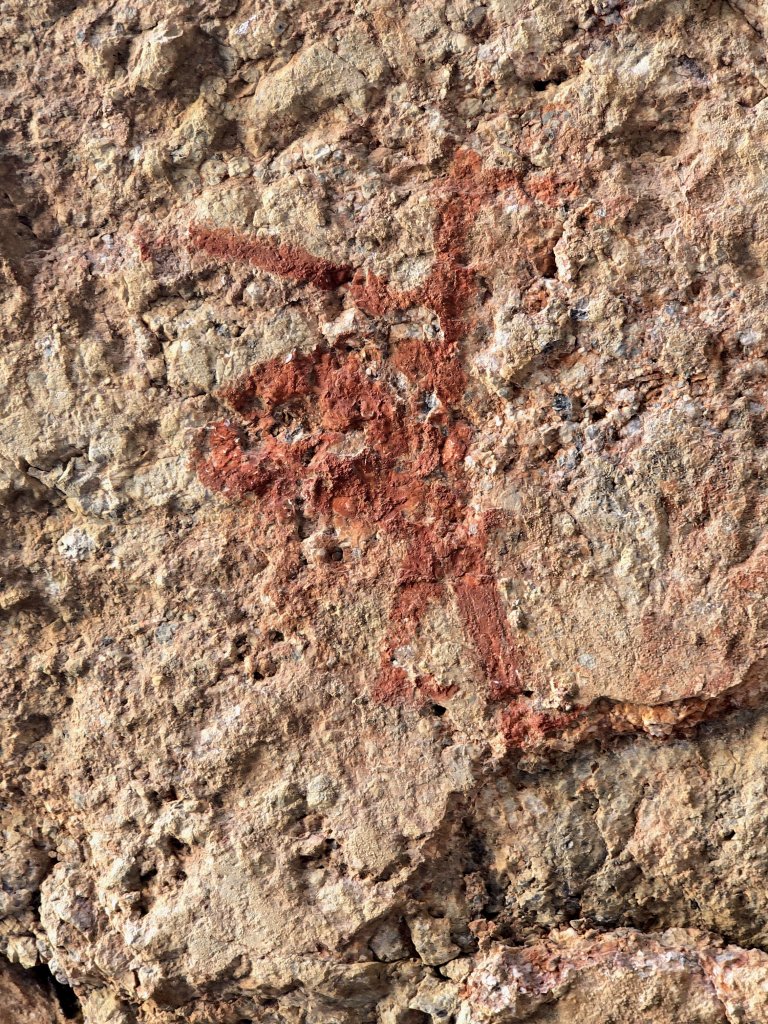
The last 32km into was, apart from a couple of very steep climbs, largely downhill and I made good time. 12km from Murghab town, I connected with the Murghab River, where it’s great canyon emerges from the mountains.
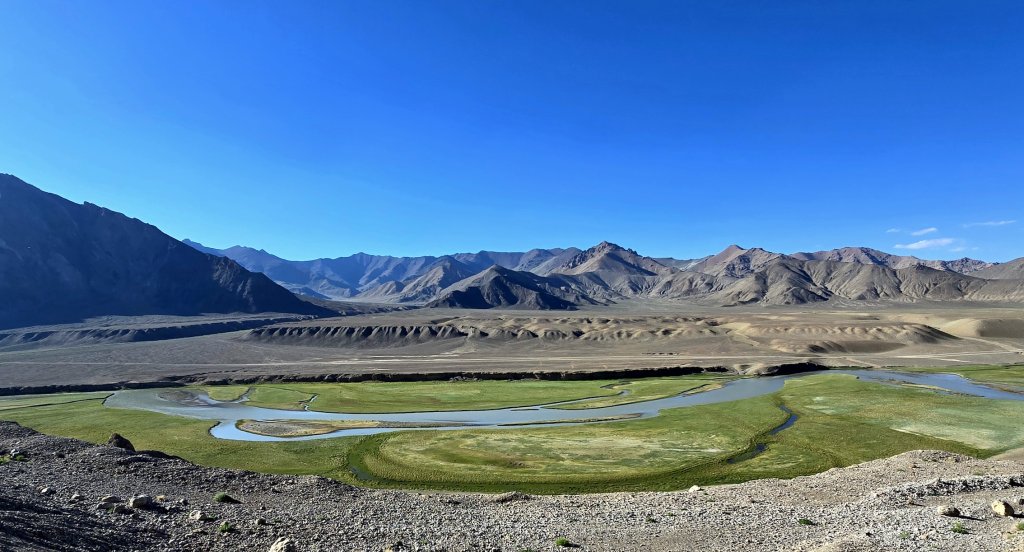
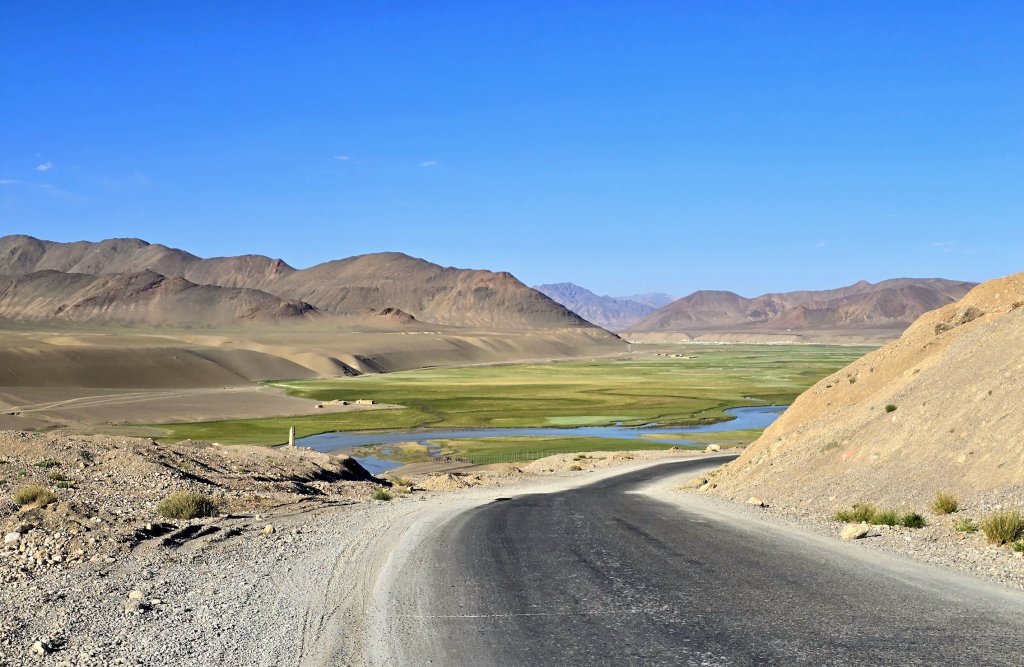
Murghab is like an old frontier town, built by the Soviets as a military base to keep an eye on China, right near the border. They developed the Pamir Highway as the connection to the town. Now the town and the highway service the ever-growing trade between China and Central Asia, particularly Tajikistan. It must be a dificult place to live, freezing in the winter and hot and full of mosquitoes in the summer.
I’m having a much needed day off in Murghab before we head through the back roads to Zorkul Lake, we think a four day ride. It’s very remote which is why I have had to condense the story of the incredible journey over the last week into one long blog entry.
FOLLOW THE JOURNEY
Thanks to ZeroSixZero, you can open this URL on your phone and select “add to home screen” and the map will become and app. You can then keep updated in real time: https://z6z.co/breakingthecycle/central-asia
TAKE ACTION
Support my Water.org fundraiser to help bring safe drinking water and sanitation to the world: Just $5 (USD) provides someone with safe drinking water or access to sanitation, and every $5 donated to my fundraiser will enter the donor into the Breaking the Cycle Prize Draw. https://give.water.org/f/breakingthecycle/#
EDUCATION
An education programme in partnership with Exploring by the Seat of Your Pants, with contributions from The Royal Geographical Society and The Duke of Edinburgh’s International Award Australia. We have created a Story Map resource to anchor the programme where presentations and updates will be added as we go.









Epic. I am exhausted just reading it!
Katie, like other followers I am in awe that amongst the physical tiredness and mental fatigue, you still manage to take so many notes and photos. It would be so easy to say “bugger it” and keep moving. I am in awe and still enthralled reading and viewing your posts.
Dear Kate,
Your achievements, grit and determination are truly monumental. Your contribution to our beautiful planet and to humankind is inestimable. We all thank you.
And heh, no more wobbling on pebbles.
Lots of love.
This is really exciting country; you must be one of the first people to cycle across GBAO area of Tajikistan. This brave and strong….. “I think he thought I was mad. Probably am.” Agree! Congratulations, Kate.
Kate
Well done…what an amazing journey. We are enjoying it vicariously!